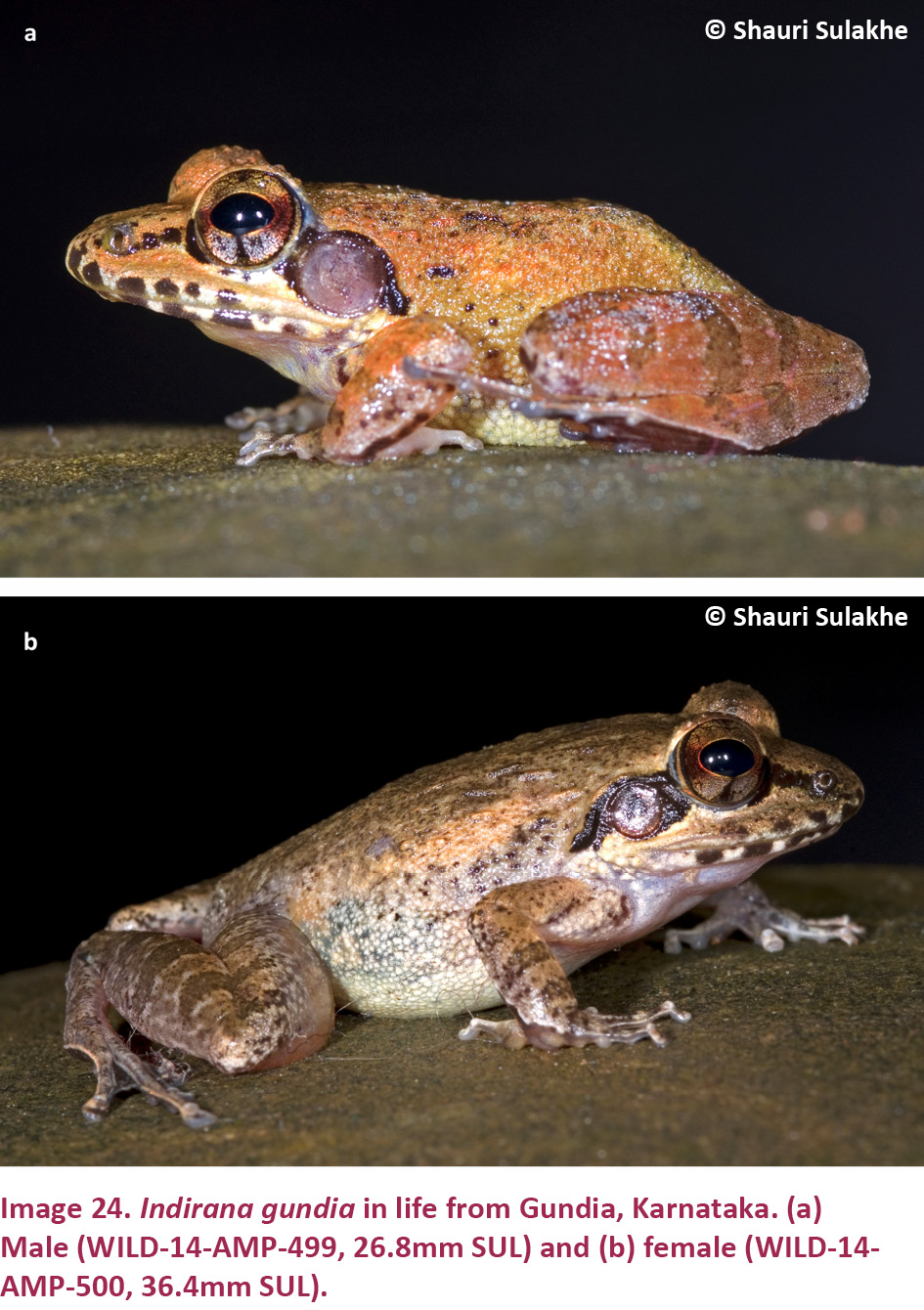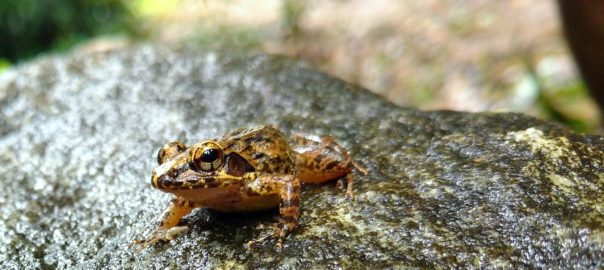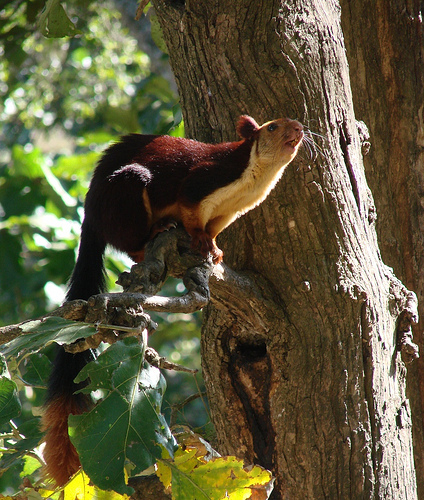This is a guest post by Madhushri Mudke from GirlGoneBirdzz.com
The word Indirana is probably derived by combining two words – India (Indi) and frogs (rana). This tells us that these frogs are known only from India, particularly the Western Ghats! They are commonly referred to as ‘Leaping Frogs’ given their behaviour and ability to jump long and fast on leaf litter. This genus includes the following species: 
I was lucky to see the Gundia Leaping Frog while I was working in Gundia district on a wet monsoon day. While strolling through the study site my mentor heard a call which everyone else failed to notice. After hours of inspection, we finally found a tiny, brownish creature calling for its mate from under moss laden rocks. I was amazed when I witnessed the spectacular camouflage of this frog!

I personally find them a very difficult group of frogs and that’s probably because I haven’t observed them enough. For me, these frogs are analogous to warblers in the bird world. The key to identification of these cryptic species would be (I guess) to first place them in their respective groups (more about this next week). Then check the location of the frog and cancel out species one by one according to their external characteristics.
The following points will be useful to understand the morphological characteristics of Gundia Leaping Frog and will also help separate this frog from others in its family:

- Size – Approximately 2-3 centimetres.
- The eyes are bi-colored. The upper half is golden yellow while the lower half is silverish
- Horizontally placed oval pupils separate the two colours of the eyes
- A pair of large and distinctive tympanums, Maroon in colour
- Extensive webbing on the feet
- Snout that looks elongated and protrudes beyond its mouth
- Back/Dorsum – Shows longitudinal skin-folds that make irregular rows
- The sides aka flanks are granular in appearance
- Presence of femoral gland on the posterior thigh
- Coloration – Mostly brownish and yellowish overall. The frog can sometimes appear little reddish and also have a central white longitudinal line on the dorsum
The Gundia Leaping Frog was discovered in 1986. Since then very little is known about the ecology and life history of this frog. It belongs to a family of frogs that is said to be evolving independently in India for more than 50 million years. It is recognised as an Evolutionarily Distinct and Globally Endangered (EDGE) species. EDGE species are remarkably unique not only in their appearance, the way they behave or live but also in their evolutionary history. The Gundia Leaping Frog is just one step away from going ‘Extinct In The Wild’ according to IUCN. If we lose these frogs, there will none of their kind left on the planet!
Read more here –
http://www.edgeofexistence.org/amphibians/species_info.php?id=632
http://journals.plos.org/plosone/article?id=10.1371/journal.pone.0166326
http://threatenedtaxa.org/index.php/JoTT/article/view/2532/3766
http://www.sekj.org/PDF/anz49-free/anz49-257i.pdf
Read More: The Largest Tadpole In India




